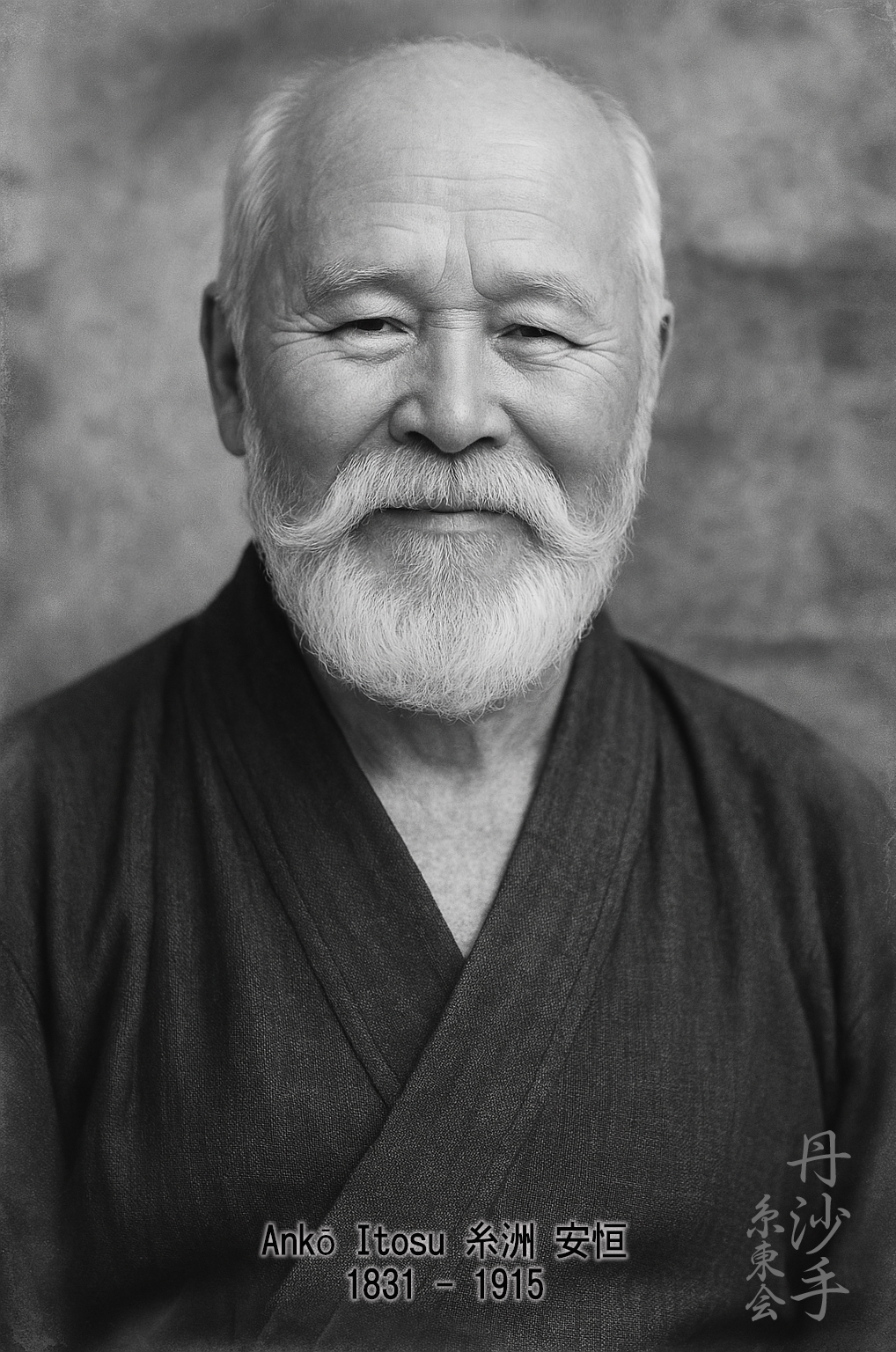Master Ankō Itosu (1831–1915) is revered as one of the most influential figures in the development and formalization of Okinawan karate. Born in Shuri, Okinawa, Itosu came from a samurai family and received a classical education. He was known to be a quiet and disciplined individual with a deep sense of humility, but also possessed an intense dedication to martial arts. As a youth, he studied under Matsumura Sōkon, one of the great martial arts masters of the time, who taught him the foundations of Shuri-te, an early form of Okinawan karate.
Throughout his life, Itosu trained in secret, as martial arts were not widely practiced or accepted in the public domain during that era. He was known for his incredible strength, speed, and mastery of kata. In particular, he played a crucial role in preserving and modernizing the traditional kata forms passed down from his teachers. He understood the value of kata as a vehicle for transmitting the essence of karate—not just as a combative art, but also as a path of discipline and personal cultivation.
One of Itosu’s greatest contributions to karate was his effort to introduce it into the Okinawan public school system. In 1901, he succeeded in making karate a part of the physical education curriculum, believing that karate training would help develop strong minds and bodies in young students. To make the practice more accessible, he simplified and systematized the training methods. In 1908, he wrote the famous “Ten Precepts (Tode Jukun)” of karate to explain its value to the Okinawan government. This document emphasized karate’s moral, physical, and educational benefits and is considered a philosophical cornerstone of modern karate.
In addition to modernizing karate, Itosu is credited with creating several new kata, including the Pinan (Heian) series—five fundamental forms designed to prepare beginners for more advanced techniques. These forms are now practiced in virtually every major karate style around the world. He also helped modify more complex kata like Naihanchi (Tekki), making them more suitable for group instruction and school curricula while preserving their martial value.
Itosu’s approach laid the foundation for karate’s transformation from a secret art to a structured system taught openly across Okinawa and later, mainland Japan. His influence extended far beyond his lifetime, as many of his students became legendary karate masters in their own right. Through his teachings, karate evolved into a disciplined practice suitable not only for combat, but for character development and physical education.
Among Ankō Itosu’s most prominent students were men who went on to establish some of the most influential karate styles in history. These include Gichin Funakoshi, who founded Shotokan Karate; Kenwa Mabuni, founder of Shitō-ryū Karate; Chōshin Chibana, who created Shōrin-ryū; and Kanken Tōyama, who later founded Shūdōkan. Their contributions ensured that Itosu’s teachings would spread far beyond Okinawa, shaping the face of modern karate across the globe.






